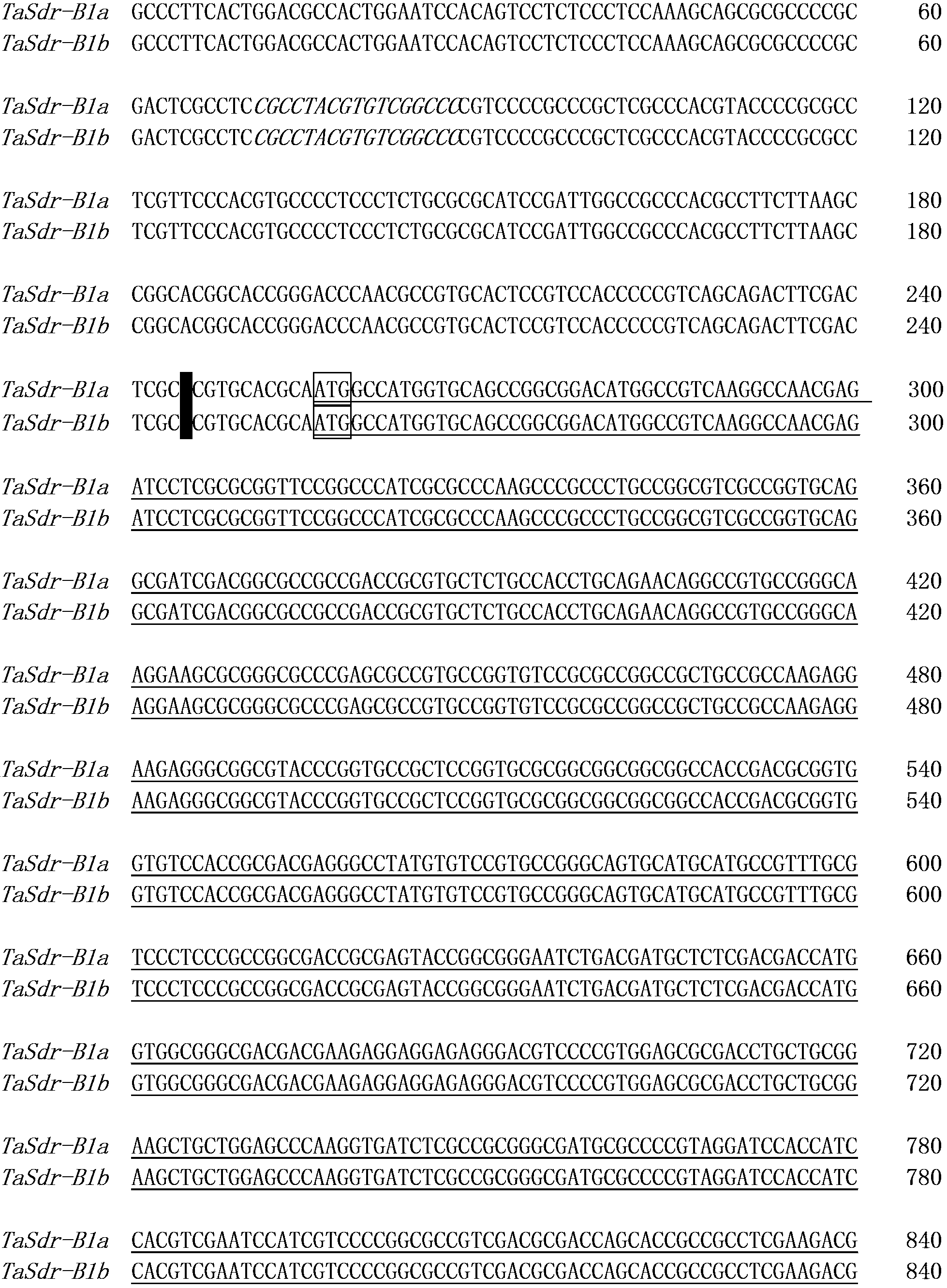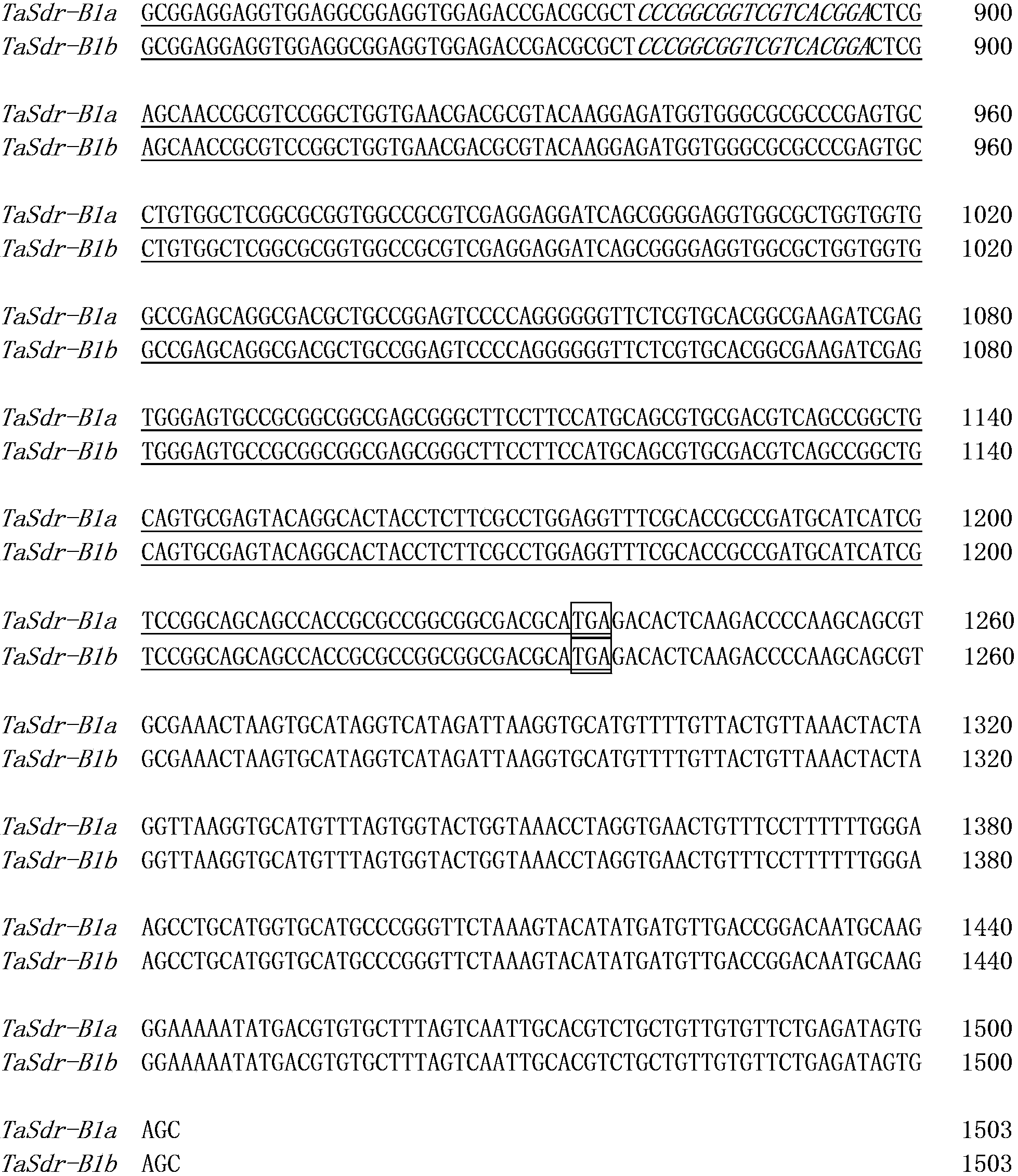Primer pair for assaying germination traits of wheat seed grains and related molecular marker
A specific primer pair and wheat technology, which is applied in the determination/inspection of microorganisms, biochemical equipment and methods, DNA/RNA fragments, etc., can solve the problems of wheat ear germination, loss of edible value, inability to co-segregate target genes, etc., to achieve The effect of accelerating the pace of breeding
- Summary
- Abstract
- Description
- Claims
- Application Information
AI Technical Summary
Problems solved by technology
Method used
Image
Examples
Embodiment 1
[0049] Example 1. Discovery of alleles and development of primer pairs
[0050] On the basis of sequence analysis of a large number of wheat varieties, it was found that the wheat TaSdr-B1 gene, two allelic variant forms of the TaSdr-B1 gene in wheat, one as shown in sequence 1 of the sequence table (named allelic gene TaSdr-B1a), and the other is shown in sequence 2 of the sequence listing (named TaSdr-B1b). The comparison spectrum of the two allelic variant forms of the TaSdr-B1 gene is shown in figure 1 , the start codon and stop codon are shown in boxes, the underlined part is the coding region, and the shaded part is the sequence polymorphic site.
[0051] Design specific primer pairs based on the two allelic variants of the TaSdr-B1 gene as follows:
[0052] Upstream primer (sequence 3 of the sequence listing): 5'-CGCCTACGTGTCGGCCC-3';
[0053] Downstream primer (sequence 4 of the sequence listing): 5'-TCCGTGACGACCGCCGGG-3'.
Embodiment 2
[0054] Embodiment 2, the application of allele and primer pair
[0055] The experimental materials are several main varieties of Chinese winter wheat, see Table 1 for details.
[0056] Each experimental material was carried out as follows:
[0057] 1. Genomic DNA extraction.
[0058] 2. Using the genomic DNA extracted in step 1 as a template, perform PCR amplification with the specific primer pair designed in Example 1 to obtain a PCR amplification product.
[0059] Reaction system for PCR amplification: template DNA about 100ng, ExTaq enzyme (Takara, code: DRR100B) 0.3 μl, GC buffer I 25 μl (Takara, code: DRR20GC I), dNTP (Takara, code: D4030RA, 2.5mM each) 4 μl, upstream The primer and the downstream primer are each 6pmol, and the reaction system is supplemented with sterile ultrapure water to 50μl.
[0060] The reaction program of PCR amplification: pre-denaturation at 94°C for 5 minutes; denaturation at 94°C for 1 minute, renaturation for 30 seconds (the first renaturat...
PUM
 Login to View More
Login to View More Abstract
Description
Claims
Application Information
 Login to View More
Login to View More - R&D
- Intellectual Property
- Life Sciences
- Materials
- Tech Scout
- Unparalleled Data Quality
- Higher Quality Content
- 60% Fewer Hallucinations
Browse by: Latest US Patents, China's latest patents, Technical Efficacy Thesaurus, Application Domain, Technology Topic, Popular Technical Reports.
© 2025 PatSnap. All rights reserved.Legal|Privacy policy|Modern Slavery Act Transparency Statement|Sitemap|About US| Contact US: help@patsnap.com



